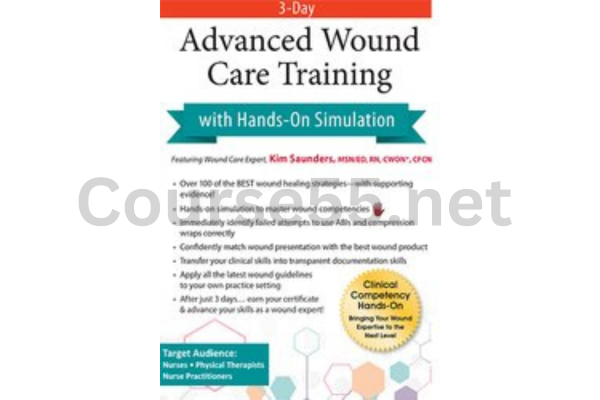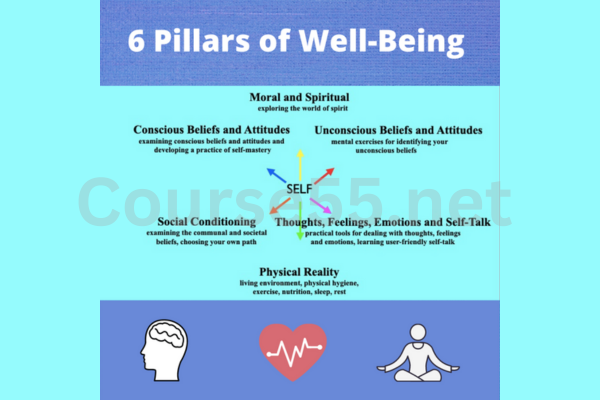-
×
 3-Day: Advanced Wound Care Training with Hands-on Simulation By Kim Saunders
1 × $15.40
3-Day: Advanced Wound Care Training with Hands-on Simulation By Kim Saunders
1 × $15.40 -
×
 Dropship University by Cameron Conrad
1 × $30.80
Dropship University by Cameron Conrad
1 × $30.80 -
×
 40-4 Options Method
1 × $9.80
40-4 Options Method
1 × $9.80 -
×
 Acceptance and Commitment Therapy: Experiential Intensive ACT Training by John P. Forsyth & Jamie R. Forsyth
1 × $30.80
Acceptance and Commitment Therapy: Experiential Intensive ACT Training by John P. Forsyth & Jamie R. Forsyth
1 × $30.80 -
×
 ADR Pro For Metatrader 4.0 By Compass FX
1 × $15.40
ADR Pro For Metatrader 4.0 By Compass FX
1 × $15.40
6 Pillars of Well-Being By Peter Reznik
$49.00 Original price was: $49.00.$7.70Current price is: $7.70.
6 Pillars of Well-Being By Peter Reznik – Immediate Download!
Content Proof:

A Comprehensive Examination of Dr. Peter Reznik’s Revolutionary Course on the Six Pillars of Well-Being
The intricacies of contemporary life frequently overwhelm those who are trying to lead balanced lives. The idea of well-being has become a ray of hope as we work through the many obstacles of everyday life, leading us to a healthier way of living. The “6 Pillars of Well-Being” course by Dr. Peter Reznik provides a methodical approach to reaching this elusive equilibrium.
This carefully planned 12-week program, which costs $49.95, includes video lessons and hands-on activities that explore the fundamentals of wellbeing. People are inspired to address their physical, mental, and emotional well-being via this investigation, creating a meaningful existence out of their own experiences. Let’s set out on a quest to explore the knowledge and resources this course offers, demonstrating its potential influence on individual development and self-discovery.
An outline of the six well-being pillars
Comprehending the Course Framework
Dr. Reznik’s program is a planned journey rather than merely a series of sessions. The purpose of the twelve 30-minute video classes and the weekly practice tasks is to promote personal development. By combining instructor-led insights with real-world application, this dual method fosters a supportive learning environment where students can fully connect with the subject matter. Think of it as a recipe for self-discovery, where each component needs to be carefully mixed to produce the intended result.
The training focuses on developing an integrative understanding of oneself and lasts for 12 weeks. The sessions will help participants develop long-term mental and emotional resilience in addition to addressing their immediate difficulties. By enabling learners to rewatch sessions, the video format promotes a deeper understanding of intricate concepts. As a result, the course is an evolving process of understanding rather than just a set of lectures.

6 Pillars of Well-Being By Peter Reznik
Elements of Well-Being
At the heart of this course lies six essential pillars, each multifaceted and interconnected. Each pillar stands as its own realm of exploration yet overlaps with the others, similar to the petals of a flower. Together, they form a holistic approach to well-being:
| Pillar | Description |
| Physical Reality | Understanding one’s physical health and its impact |
| Thoughts, Feelings, and Emotions | Recognizing and managing mental and emotional states |
| Social Conditioning | Examining the influence of social norms on behavior |
| Unconscious Beliefs and Attitudes | Identifying hidden beliefs shaping perceptions |
| Conscious Beliefs and Attitudes | Exploring beliefs that influence conscious thought and actions |
| Moral and Spiritual Reality | Reflecting on values and spiritual beliefs |
The First Pillar: Physical Reality
Exploring the Fundamentals of Physical Health
Physical health serves as the very foundation upon which the entire structure of well-being is built. As the body and mind are entwined like the roots and trunk of a tree, recognizing how physical conditions impact overall wellness is paramount. Dr. Reznik emphasizes that understanding one’s physical reality is crucial it is this awareness that often serves as the catalyst for change.
To illustrate, consider the well-regarded study published by the World Health Organization, which emphasizes the link between physical activity and improved mental health. It concludes that individuals engaging in regular exercise report lower levels of anxiety and depression. This clear correlation showcases the importance of recognizing our physical state as a critical element of well-being.
The Significance of Lifestyle Decisions
Additionally, the first pillar promotes a critical analysis of routine lifestyle decisions. Our physical reality is greatly influenced by elements like our nutrition, sleep patterns, and level of exercise. Participants can improve their self-awareness and start a positive shift by addressing these areas.
For example, a healthy, fruit-and-vegetable-rich diet can boost energy levels, much like high-quality gasoline does for a car. This improves mental clarity and emotional stability in addition to physical energy. Participants may make deliberate decisions that put their biological health first as they work through this pillar, which will eventually have a positive ripple effect on the other pillars.
Second Pillar: Feelings, Emotions, and Thoughts
The impact of the mind on wellbeing.
The second pillar, which moves from the body to the mind, is particularly concerned with the interaction of thoughts, feelings, and emotions. In the same way that a painter selects colors according to the feelings they wish to convey, people can choose mental models that promote optimism. According to Dr. Reznik, living a balanced life requires emotional intelligence, which is the capacity to identify, comprehend, and control emotions.
A Harvard University research, for example, found that people with strong emotional intelligence typically do well in interpersonal relationships, which reduces conflict and increases life happiness. As a result, by cultivating this skill, students can improve their general emotional health, much like honing a tool for fine crafting.
Mastery of Mental States
Mastery over one’s mental states is not an overnight achievement; it requires practice and dedication. The course provides participants with practical exercises designed to cultivate emotional awareness. Techniques such as mindfulness meditation, journaling, and cognitive restructuring can help decipher the maze of one’s emotions.
Imagine standing in front of a chaotic canvas, where splatters of paint represent different emotions vying for attention. Through structured techniques, participants can learn to paint a cohesive masterpiece of emotional understanding, allowing them to respond to life’s challenges with grace and clarity.
Third Pillar: Social Conditioning
The Impact of Society on Individual Behavior
The third pillar, social conditioning, invites participants to delve deep into the societal influences that shape our behaviors. Just as a river flows along the path carved by the landscape, our actions often follow the norms and expectations set by the society we inhabit. In Dr. Reznik’s course, individuals are encouraged to reflect on how these social conditions have molded their perceptions and actions.
One might think of the Asch conformity experiments, where subjects adjusted their opinions to match those of a majority group, even when they knew their choices were incorrect. This powerful psychological phenomenon showcases how pervasive social influence can be like the wind shaping the direction of a sailing ship, our communities can steer us towards conformity rather than authenticity.
Accepting Uniqueness in the Face of Social Conventions
Adopting individualism in the face of these social pressures is the difficult part. In addition to challenging the legitimacy of these norms, participants are encouraged to name instances of social conditioning in their own lives. They are urged to recover their independence through supervised activities, which eventually leads to a more authentic life.
This pillar promotes striking a balance between one’s personal beliefs and socially acceptable standards. People can develop authenticity without losing sight of the community’s overall fabric by comprehending and separating themselves from cultural norms.
Fourth Pillar: Implicit Attitudes and Beliefs
Revealing Hidden Factors
As we examine the fourth pillar in greater detail, we come across the attitudes and unconscious ideas that lurk in the background and shape our life. These beliefs frequently shape our opinions and choices without our conscious knowledge, much like a tree’s unseen roots that support its growth. This pillar offers a special chance for introspection and change.
Finding these underlying beliefs is crucial, according to Dr. Reznik, since they have the power to either move us forward or hold us back. Stanford University research shows that self-limiting ideas can impair performance and lower life happiness in general. Understanding these ideas causes a release, similar to letting go of old, burdensome luggage before setting off on a journey.
Changing the Unconscious
In order to uncover these underlying impacts, the training equips participants with techniques like journaling and guided contemplation. At first, learning about these beliefs could seem overwhelming, like unlocking a dusty attic full of lost treasures. However, after they are discovered, people may face and destroy these constricting ideas, turning them into stories that empower.
People can alter their emotional scripts by interacting with their unconscious beliefs. They become active authors, paving the way for self-awareness and free thought, rather than passive spectators in their life’s story.
Fifth Pillar: Conscious Beliefs and Attitudes
Exploring the Power of Awareness
Moving on to the fifth pillar, Dr. Reznik explores conscious beliefs and attitudes. These elements play a significant role in shaping behaviors and life choices. Unlike their unconscious counterparts, conscious beliefs are like the sun shining boldly in a clear sky, visibly influencing decisions all should be acknowledged to gain a comprehensive understanding of oneself.
For example, having a strong belief in personal agency can lead to proactive decision-making, whereas a sense of helplessness may lead to complacency. This awareness empowers individuals to recognize what drives their daily interactions and life choices while nudging them toward self-efficacy.
Adopting Empowering Beliefs
Through the course, participants are invited to examine their conscious beliefs critically and to determine how aligned these are with their true selves. This introspection often involves identifying any discrepancies between one’s conscious beliefs and actions a reflection that can foster transformational change.
By the end of this pillar, participants can identify beliefs that serve as anchors, holding them back from realizing their full potential. Much like a gardener weeding out harmful plants, individuals can cultivate a flourishing garden of empowering beliefs that fuel their aspirations.
Sixth Pillar: Moral and Spiritual Reality
Reflecting on Values and Spirituality
Concluding the exploration of the pillars, the sixth segment addresses moral and spiritual reality. This pillar encourages participants to reflect on their values and beliefs, which serve as the compass guiding their decisions. Just as a lighthouse guides ships through the fog, a clear understanding of one’s moral and spiritual beliefs can illuminate the path during turbulent times.
Dr. Reznik seeks to instill the idea that spirituality, irrespective of religious affiliation, can enrich one’s sense of purpose. A comprehensive study conducted by Duke University indicates that spiritual practices can lead to improved mental health outcomes, reinforcing the idea that exploring moral dimensions contributes significantly to overall well-being.
Developing a Personal Meaning
By discovering fundamental principles that align with their true selves, participants are inspired to give their life purpose. People can rediscover their spiritual core and have a greater sense of fulfillment by partaking in activities like meditation, volunteer work, or spending time in nature. In order to help participants create a more meaningful life narrative, the course encourages introspection on what really matters.
People can cultivate resilience and inner serenity by transcending everyday challenges through this reflection. A more cohesive sense of self is the result of the journey into the moral and spiritual world, which ultimately enhances each of the earlier pillars.
In conclusion
The “6 Pillars of Well-Being” course by Dr. Peter Reznik is a well-designed map that helps us traverse the complex terrain of our mental, emotional, and physical health as we make our way through life’s maze. The course gives students the tools they need for self-mastery and personal transformation through a thorough approach. Every pillar offers a distinct viewpoint that promotes greater self-awareness and a more contented life.
The cumulative knowledge acquired from this planned path enables people to face underlying ideas, question social standards, and embrace their moral and spiritual values. In this life-changing course, Dr. Reznik draws on his forty years of experience in mental health to emphasize that well-being is a lifelong process of self-discovery and personal development rather than a final destination.
The “6 Pillars of Well-Being” act as a lighthouse, pointing us in the direction of acceptance, serenity, and a life fully lived in a world that frequently feels chaotic and overwhelming. By making an investment in our well-being, we eventually create a positive ripple effect that goes well beyond our personal experiences, paving the way for a better future for both ourselves and others around us.
6 Pillars of Well-Being By Peter Reznik
Frequently Asked Questions:
Business Model Innovation: We use a group buying approach that enables users to split expenses and get discounted access to well-liked courses. Despite worries regarding distribution strategies from content creators, this strategy helps people with low incomes.
Legal Aspects: There are many intricate questions around the legality of our actions. There are no explicit resale restrictions mentioned at the time of purchase, even though we do not have the course developers’ express consent to redistribute their content. This uncertainty gives us the chance to offer reasonably priced instructional materials.
Quality Control: We make certain that every course resource we buy is the exact same as what the authors themselves provide. It’s crucial to realize, nevertheless, that we are not authorized suppliers. Therefore, our products do not consist of:
– Live coaching calls or sessions with the course author.
– Access to exclusive author-controlled groups or portals.
– Membership in private forums.
– Direct email support from the author or their team.
We aim to reduce the cost barrier in education by offering these courses independently, without the premium services available through official channels. We appreciate your understanding of our unique approach.
Be the first to review “6 Pillars of Well-Being By Peter Reznik” Cancel reply
You must be logged in to post a review.
















Reviews
There are no reviews yet.